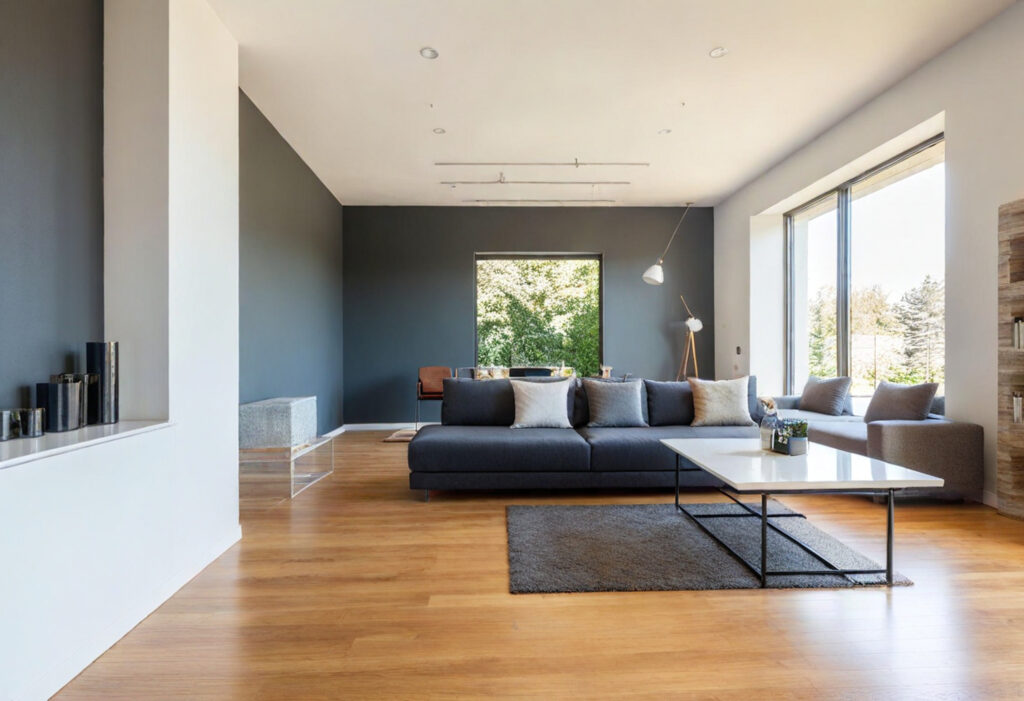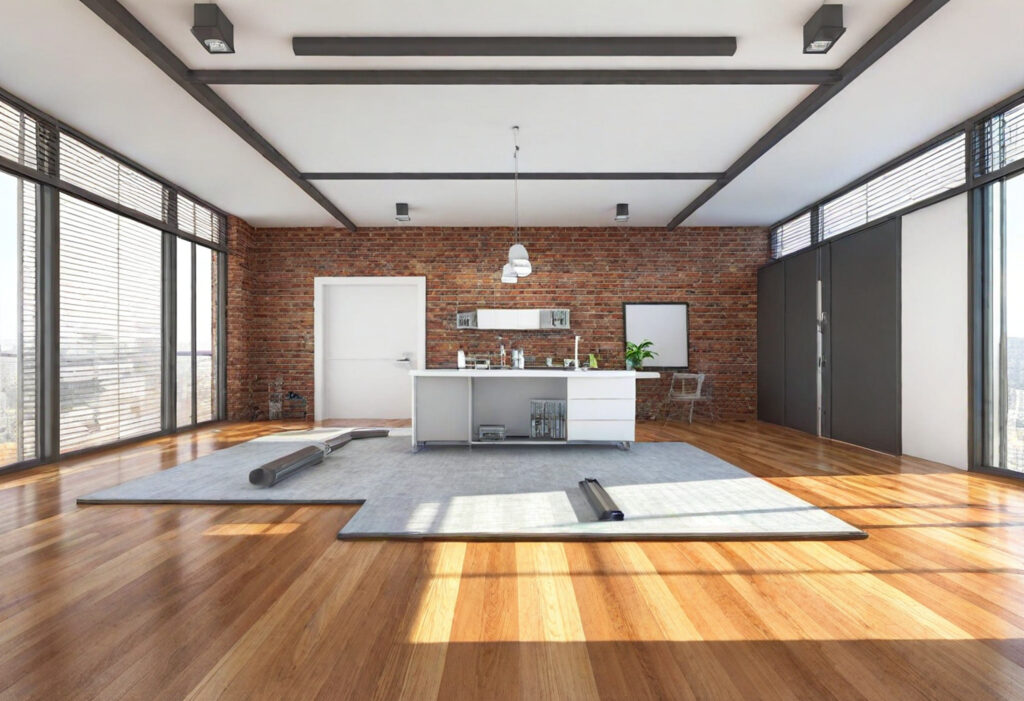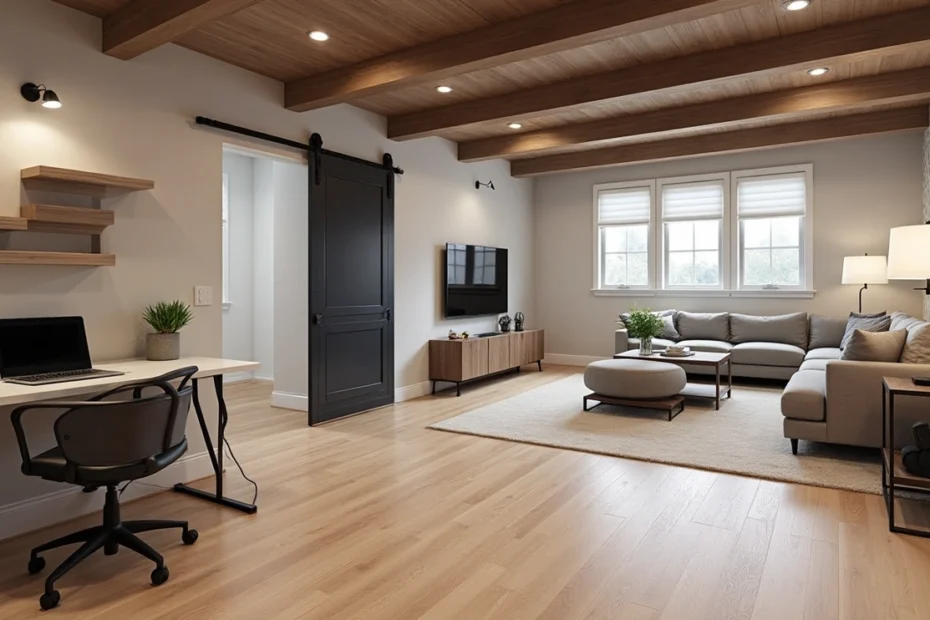Your basement multipurpose room can become one of your home’s most valuable spaces. The transformation turns unused square footage into an amazing area with endless possibilities. Whether you’re a fitness buff or need extra space for guests, this room adapts to your lifestyle.
A multipurpose room adapts to serve various functions based on your family’s needs. This guide shows you the steps to create your perfect space, from planning to completion. You’ll discover creative basement ideas that seamlessly blend home offices, playrooms, and entertainment areas. Smart storage solutions and clear priorities help create a balanced space that works perfectly for everyone at home.
Planning Your Multipurpose Basement Room
Your basement multipurpose room needs careful planning before you rush into buying stuff or starting renovations. A basement offers endless possibilities. Your needs and creativity will shape what you can do with it.
Identify your main goals
Take time to list everything you want from your basement space before picking up a paintbrush or ordering furniture. Here are some key questions to ask yourself:
- What main functions should this space serve? (Home office, entertainment area, kids’ playroom)
- How will these needs evolve?
- Which activities need their own space in your home?
- What functions could share the same area?
A homeowner said, “Space planning was key for this basement remodel on a budget since we needed to maximize the space and optimize it to use it in different ways.” They listed everything from storage needs to entertainment requirements before making any design choices.
Get everyone’s input on decisions
The best basement transformations happen when everyone who’ll use the space shares their ideas. Getting family opinions early builds excitement and makes sure the room works for everyone’s needs.
Families with kids might need areas for toys and active play while keeping adult spaces separate. A designer shared her approach: “I started by listing all the things we needed to use the space for.” She included storage, movie watching, children’s play areas, crafting space, and pet areas in her plans.
Family input often reveals priorities you might miss. This team effort helps turn your basement into a family favorite spot rather than just another room.
Know what makes a multipurpose room
A multipurpose room adapts to different uses based on your changing needs. These spaces work differently from single-purpose rooms because flexibility drives their design.
Design experts explain it well: “A multipurpose room is a work space in which different professional activities can be carried out. That is, it is an environment that adapts to the different needs of the person who needs it.” These rooms need good dimensions, great lighting, proper electrical setup, and versatile furniture.
The magic lies in smart planning. A true multipurpose room has specific zones, adaptable furniture, and storage solutions that make switching between activities easy. It’s not just a dumping ground for random stuff.
Designing the Layout for Flexibility

“A critical component of effective basement design is zoning, which involves creating distinct areas designated for specific activities.” — Von Companies, Professional basement finishing and remodeling company
Your basement’s physical layout shapes how well it serves multiple purposes. A well-planned design that adapts to changing needs forms the foundation of a flexible space.
Create zones for different activities
A proper layout is vital to keep your multipurpose basement room organized. The basement works best when divided into distinct functional areas without complete separation. You could set up an entertainment zone with cozy seating, a children’s play area, and a workspace or craft corner. Each section needs a clear purpose that connects visually with other areas.
Area rugs work great to separate spaces without physical barriers. The right furniture placement defines different areas naturally. Place seating close to entertainment zones, but keep walkways clear for easy movement.
Use open space wisely
Basements feel more comfortable and spacious with an open layout. Internal walls restrict airflow and create a confined feeling. The space works better with central open areas and larger furniture against walls to keep that spacious feel.
Open designs combined with modular furniture let your basement setup grow with your family’s needs. The layout should feel user-friendly without bottlenecks or tight spots. People need to move through the space easily.
Incorporate room dividers or sliding doors
Temporary dividers are great solutions when you need privacy or separation. Sliding doors or room dividers create multi-purpose spaces that adapt quickly. A large open area can serve as your home office during work hours and transform into a guest space at night.
Options include:
- Lightweight, movable dividers that keep spaces open
- Frosted glass partitions that let light through while offering privacy
- Tall bookshelves that work as storage and barriers
- Curtains that provide an affordable way to divide space
Choose dividers that match your multipurpose basement ideas and maintain the open atmosphere of your space.
Choosing the Right Furniture and Features
“Multifunctional furniture provides a significant advantage when designing a multi-purpose basement.” — Von Companies, Professional basement finishing and remodeling company
Your basement multipurpose room’s success depends on finding the right balance between function and style. The furniture and features you pick will end up deciding how well your space adapts to different uses.
Opt for dual-purpose furniture
Your multipurpose basement needs furniture that serves double duty. Multifunctional furniture goes beyond saving space – it creates adaptable environments that change with your needs. Modular sofas adjust easily for movie nights and family gatherings. Storage ottomans, expandable tables, and Murphy beds make great investments for flexible spaces.
Quality makes a big difference in basement environments. Furniture built with eco-friendly, high-quality materials will last longer than cheaper options that might break down in your basement’s unique conditions. You should measure your stairway and look for pieces that come apart when moving larger furniture downstairs.
Use neutral colors for cohesion
Neutral color schemes help create visual harmony in spaces with multiple functions. Light-colored walls brighten up basements and make lighting much easier. You can add pops of color through accessories like throw pillows, artwork, or decorative pieces to tie different zones together.
Add lighting and mirrors to improve the space
The right lighting can completely change your basement’s atmosphere. Pick sleek fixtures you can tuck away instead of chandeliers or bulky lamps that take up precious headspace. Lower ceilings work best with recessed lighting or track systems that keep an open feel.
Mirrors work magic in basement settings. They reflect natural light throughout the room when placed opposite windows. Wall-mounted mirror arrangements make your space feel bigger. This simple addition makes a huge difference in brightness.
Think about flooring options for comfort and durability
Your basement’s flooring must handle moisture well. Luxury vinyl planks give you great water resistance at $2-10 per square foot, making them perfect for damp-prone spaces. Modular tile systems let you remove, dry, and reinstall if flooding happens.
Specialized waterproof carpeting adds comfort to cozy areas without traditional carpet’s moisture risks. Ceramic or porcelain tile gives you lasting durability in high-traffic spots at $2-30 per square foot.
Make sure your flooring choice matches how you’ll use each part of your multipurpose basement.
Organizing and Final Setup Tips

The right finishing touches will revolutionize your basement multipurpose room into a practical space after you set up the layout and furniture. A well-organized space prevents chaos from taking over when the room serves multiple purposes.
Use vertical storage and shelving
Vertical space plays a vital role in any basement room setup. Wall-mounted shelves and cabinets free up valuable floor area and keep everything tidy. The floor-to-ceiling designs make the most of vertical space and keep items tucked away neatly. You might want to look at these vertical storage options:
- Pegboards for tools, craft supplies, or sports equipment
- Floating shelves for decorative items and everyday essentials
- Ceiling-mounted racks for bulky, seasonal items
- Custom-built-ins that match your family’s storage needs
A homeowner who reorganized their basement said, “It feels even better knowing we’ve added 550 sq’ of finished space to our home.”
Label and categorize items
Smart organization systems change how you use your multipurpose space. Transparent bins let you see what’s inside quickly, but good labels take things to the next level. You can create matching label designs with a label maker or use painter’s tape and markers if you’re on a budget.
Clear categories like holiday decorations, sports equipment, and craft supplies make finding items easier later. Regular decluttering helps your multipurpose basement ideas stay functional instead of becoming just another storage space.
Add personal touches and decor
Your basement should feel welcoming, not just functional. Family photos, artwork, and decorative elements show off your style. A few colorful throw pillows, blankets, and well-placed accessories add warmth without creating clutter.
Test the flow and functionality of the space
Give yourself time to live with the space before you call it finished. Each zone should work as planned, so watch for any issues with traffic flow or functionality. Small changes to where you place furniture or how you store things can make a big difference in how your basement multipurpose room works day to day.
Conclusion
Final Thoughts on Your Basement Transformation
A basement transformation into a multipurpose room needs careful planning and execution. This piece has explored everything from the original concept to the final steps of creating your dream space. Your project’s success depends on finding the right balance between function and style while staying flexible.
Your basement stands out as the most versatile space in your home. Taking time to set priorities, create zones, and pick adaptable furniture will boost its daily use. The best multipurpose rooms grow and adapt to your needs rather than staying fixed in one layout.
Storage solutions can make or break these spaces. Vertical shelving, labeled systems, and multifunctional furniture help maintain order during various activities. Smart lighting choices and strategic mirror placement help curb the darkness that basements often face. This creates a welcoming atmosphere, whatever the natural light situation.
A well-designed basement shines through its adaptability. Your basement can change functions naturally – it works as a home office during the day, becomes an entertainment zone at night, and serves as guest quarters when needed. This flexibility helps you get the most from your home’s square footage while giving space to activities that would otherwise clash.
Once your multipurpose basement is ready, you might wonder how you managed without it. The work takes time and money, but you’ll enjoy a customized space that fits your family’s needs every day. Your basement will reach its full potential and change from a forgotten storage area into your home’s functional hub.
